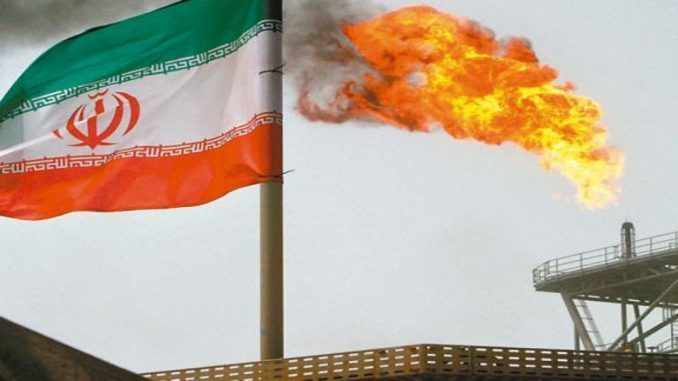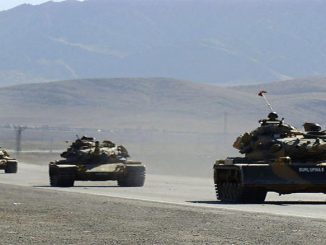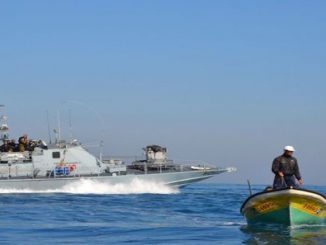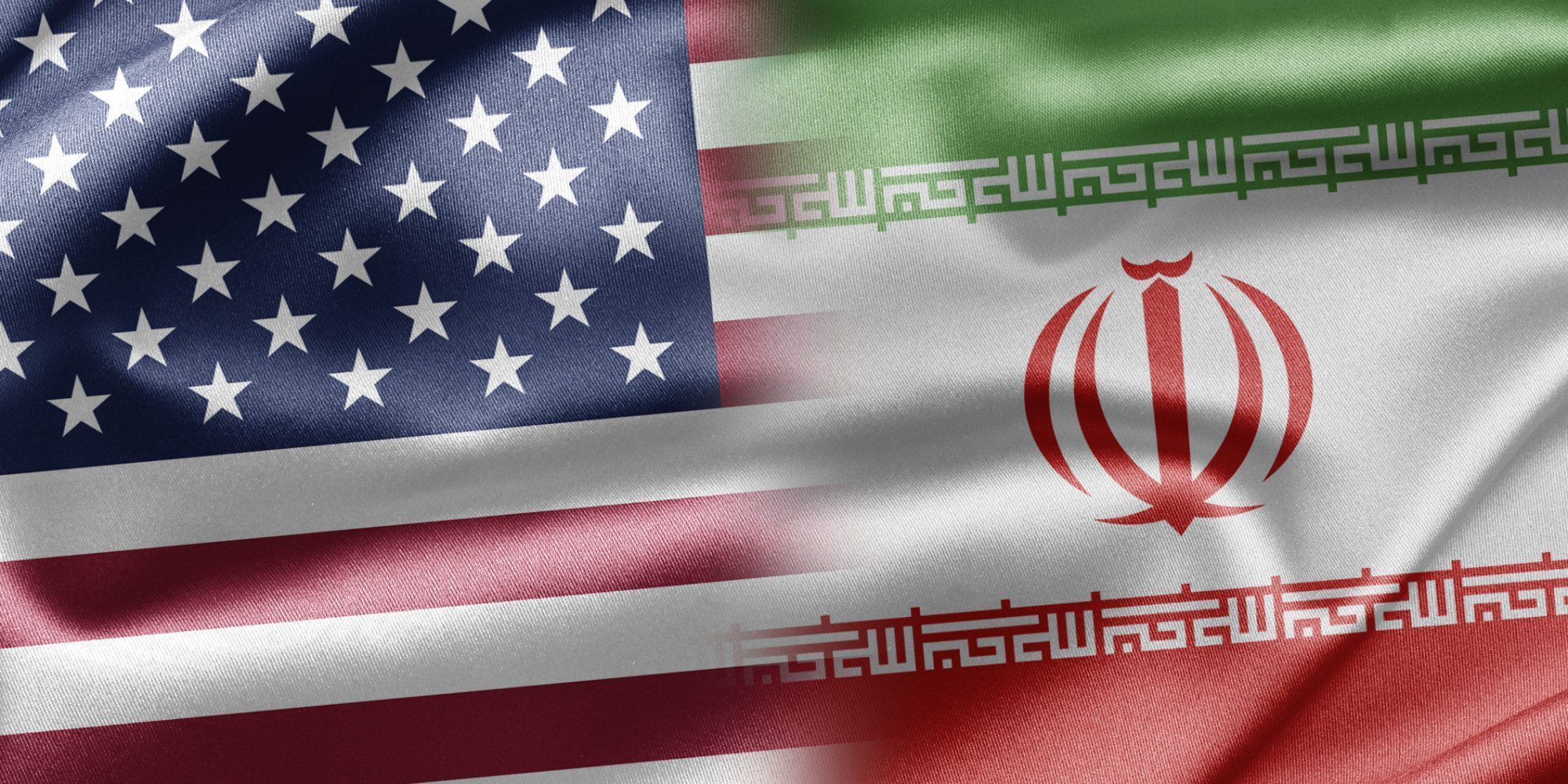
Iran has often seemed to be on the brink of democracy. During the twentieth century, the country experienced three major political upheavals: the Constitutional Revolution of 1905–11, the oil nationalization movement of 1951–53 and the Islamic Revolution of 1978–79. Each differed from the others in important ways, but all constituted a reaction to corruption, misrule, and autocracy. They all reflected the spread of literacy, the rising expectations of a growing middle class, and the impatience of a wealthy business community with official mismanagement. They were all characterized by an aspiration for some form of democratic government. Yet each time, that aspiration was disappointed.
The constitution of 1906 created a parliament to check the power of the shah and give the Iranian people ultimate control of their country. Yet two decades later, the shah once again ruled as an absolute monarch, parliament had become a rubber stamp, and the new constitution was largely ignored. The 1951–53 movement was fueled principally by a demand for the nationalization of Iran’s oil industry, then controlled by the British government. Its leader, Prime Minister Mohammad Mosaddeq, was a populist, a reformer, and a champion of parliamentary, rather than royal, authority. Yet once again, what some thought was a prospect of democracy was cut short when, in 1953, Mosaddeq was overthrown in a coup engineered by the CIA and British intelligence. The shah retained his throne, and a royal crackdown on political activity followed.
In Democracy in Iran, Misagh Parsa examines why the forces of repression have always gained the upper hand over Iran’s democratic impulses and how democracy might eventually emerge in Iran. He touches briefly on the Constitutional Revolution and the oil nationalization movement. But his main focus is on what he regards as the failed democratic promise of the 1978–79 Islamic Revolution. He concludes that, given the character of the Islamic Republic, if democracy does come to Iran, it will do so through revolution, not gradual reform.
The Islamic Revolution, Parsa believes, could plausibly have led to a democratic government. As he points out, it was brought about by a broad coalition: seminary and university students, shopkeepers, merchants, intellectuals, and blue- and white-collar workers. The clergy mobilized large and diverse crowds to take to the streets. But even those who marched for revolution under the banner of Islam and who later voted to create an Islamic republic did not anticipate the extreme theocracy that the clerics would later establish. The movement’s leader, Ayatollah Ruhollah Khomeini, led many to believe that he supported a form of democratic rule, was committed to freedom of the press and freedom of expression, and had no interest in governing the country himself or having other clerics run the government.
Yet in emphasizing the democratic aspirations of many who marched in 1978–79, Parsa fails to convey the extent to which Khomeini was committed to the idea of an Islamic state headed by the clergy and does not give sufficient weight to the power of the clergy as a body. Islam figured prominently in the values and political views of the merchants, shopkeepers, and students who demonstrated and in the platforms of the political groups, such as the Iran Freedom Movement, that supported the revolution. The marchers’ principal slogan—“Independence, Liberty, Islamic Republic”—did not mention democracy. Khomeini, no doubt coached by the secular advisers who gathered around him during his brief exile in Paris in 1978, did pay lip service to democratic principles. But in his famous treatise on Islamic government, composed in 1970, during his far longer exile in Iraq, Khomeini made clear that clerics should rule in an Islamic state. Even in Paris, he insisted that sharia should prevail in a true Islamic government. After the overthrow of the monarchy, Iranians voted in huge majorities for an explicitly Islamic republic and for a constitution that placed a clergyman, Khomeini, at its apex.
Theography established
Central to the revolutionary project was the doctrine of velayat-e faqih, the idea that ultimate power in an Islamic state must be vested in the most eminent living Islamic jurist, with the clergy determining the basic framework of the laws, the judicial system, and how the country is ruled. The result, Parsa writes, was that “Khomeini and his allies moved to establish a theocracy. They relied on ideological, political, and repressive mechanisms to gain popular support [and] demobilize the growing opposition.” Even as Iran’s new leader espoused policies of distributive justice in favor of the poor and the oppressed, he set about ruthlessly eliminating rival claimants to power and silencing dissent.
Repression has remained a prominent feature of the Islamic Republic ever since the Islamic Revolution, but dissent was never eliminated.
In this campaign, as Parsa recounts, Khomeini and his lieutenants deployed religious police; the Islamic Revolutionary Guard Corps, the parallel military force beside the regular army, responsible for protecting Iran’s Islamic character; and club-wielding thugs from the vigilante group Ansar-e Hezbollah (Partisans of the Party of God). Members of these groups disrupted dissident gatherings, while the new regime closed down newspapers critical of the emerging order and banned opposition organizations, including the Kurdish Democratic Party, which Khomeini labeled “the party of the devil.” Hundreds of Kurds died in skirmishes with the Revolutionary Guards or were executed after being convicted of crimes such as “making war against God”—in other words, of rebellion. Other movements that campaigned on behalf of ethnic minorities met a similar fate. Finally, the clergy around Khomeini turned against even their former allies. Radical left-wing groups, such as the Mujahideen-e Khalq, and more moderate ones, such as the National Front and the Iran Freedom Movement, headed by Mehdi Bazargan, Khomeini’s first prime minister, had initially supported Khomeini, but within a few months, they found themselves targets of the regime.
The country’s first president after the revolution was Abolhassan Bani-Sadr, an independent who tried to chart a moderate path during the crisis that began in November 1979 when revolutionaries captured 66 Americans at the U.S. embassy in Tehran. (They held 52 of them hostage for over a year.) But Bani-Sadr became mired in conflict with senior clerics and was impeached by the parliament in June 1981, just 16 months into his presidency. When his followers rose up, Parsa writes, “a veritable bloodbath soon followed.” The clerical regime put to death 2,665 political prisoners in six months. “Even the highest religious leaders,” Parsa says, “were not immune.” Ayatollah Mahmoud Taleghani, a popular liberal cleric, was marginalized. Grand Ayatollah Kazem Shariat-Madari, who rejected the doctrine of velayat-e faqih, was placed under house arrest.
Reform and repression
Parsa shows that repression has remained a prominent feature of the Islamic Republic ever since, but also that dissent was never eliminated. The ideas of reform, the rule of law, and democratic and accountable government remained alive. There have always been schisms within the ruling elite, Parsa observes, and outspoken, dissenting voices have always made themselves heard, especially on subjects such as the murder of political prisoners, the banning of newspapers, and election tampering. In 1981, one of Khomeini’s grandsons told the BBC that the Islamic government was “worse than that of the Shah and the Mongols” and accused the regime of “killing people or jailing them for no reason.”
From time to time, these undercurrents have come to the surface. In 1997, Mohammad Khatami was elected president by a large majority on promises of greater social, political, and press freedoms and respect for the rule of law and privacy rights. Khatami was, as Parsa points out, no revolutionary. He did not want to overthrow the Islamic Republic or to challenge the regime’s foundations. But he did attempt to ease controls on the press and political activity, to face down the security agencies, and to advance a market-oriented economic agenda.
Yet, Parsa adds, the conservative forces only intensified their repressive tactics, and Khatami’s reformist moment proved short lived. The backlash began in 1998 with a string of reprisals against leading moderates. That year, two reformist leaders were killed in their homes and the bodies of two murdered secular dissident writers were discovered in different parts of Tehran. They were killed, it is widely believed, by the security agencies. Abdollah Nouri, a leading cleric and Khatami’s interior minister, and Gholamhossein Karbaschi, the mayor of Tehran and a Khatami supporter, were jailed on trumped-up charges.
The next year, Iran underwent one of the most explosive moments of public dissent in its recent history. In July, after the courts shut down a popular, liberally inclined newspaper, Salam, protests erupted at the University of Tehran. The regime responded harshly, sending security forces into the dormitories before dawn to beat up students in their beds and to trash their living quarters.
The incident spelled trouble for the establishment. As Parsa notes, in the two decades since the revolution, the university student population had increased almost tenfold, from around 160,000 in the early 1980s to 1.5 million in 2000. Only a minority normally engaged in political activism, but it did not take much to politicize the rest.
The initial protest and crackdown at the University of Tehran provided the necessary spark. Over the next six days, the unrest spread to universities in towns and cities across the country. Student leaders expanded their demands, calling for freedom of the press, the release of political prisoners, and government accountability. They shouted slogans such as “Down with dictators!” and “Death to despots!” and even called on the supreme leader, Ali Khamenei, to resign.
At first, many senior clerics and government officials, including Khamenei himself, had at least publicly expressed sympathy and cautious support for the students and decried violence against them. But as the protests spread and grew more radical in tone, the official attitude quickly changed. Paramilitary forces from the Revolutionary Guards were sent in to beat up demonstrators. The police arrested a large number of students. Some simply disappeared. Senior officials labeled the students “rioters and bandits.” Khamenei claimed that they were supported “by bankrupt political groups and encouraged by foreign enemies.” A massive counterdemonstration was organized to support the government. As the protests were spreading, 24 Revolutionary Guard commanders sent an open letter to Khatami warning him that they were losing patience with “democracy,” which was leading to “anarchy.” The message was clear: the conservative establishment’s tolerance for dissent was strictly limited. If things went too far, it would not hesitate to use force.
It was under Ahmadinejad that Iran saw its most serious challenge to the conservative establishment since 1979.
The crackdown continued until the end of Khatami’s tenure, in 2005. Reformist newspapers were shuttered, and dozens of pro-reform activists were arrested, as were 60 members of the Iran Freedom Movement. The Council of Guardians, a constitutional watchdog group controlled by conservatives, vetoed numerous progressive laws enacted by parliament, including bills that would have expanded women’s and civil rights and barred security forces from entering university campuses. Khatami, it turned out, had no control over the security forces, the intelligence agencies, the judiciary, or the courts. The result, Parsa writes, was “conservative ascendancy and intensified repression.”
In the 2004 parliamentary elections, after dozens of reformist candidates had been disqualified by the Council of Guardians, the conservatives won a majority. The victor in the next year’s presidential election was Mahmoud Ahmadinejad, a populist who, in Parsa’s words, “pursued policies that exacerbated the state’s growing authoritarian nature and cut short hopes for political reform.” The new president “lost no time in introducing key changes that reflected state interest in greater control, politicization and militarization of society.”
Dashed hopes
And yet it was under Ahmadinejad that Iran saw its most serious challenge to the conservative establishment since 1979. In 2009, Ahmadinejad, implicitly supported by the ruling establishment, including the supreme leader and many commanders of the Revolutionary Guards, ran for a second term as president. He was challenged by two prominent politicians: Mir Hossein Mousavi, a former prime minister, and Mehdi Karroubi, a leading cleric and former speaker of parliament. Both were establishment figures, but both campaigned on platforms of reform and an end to Iran’s international isolation. Such was the hunger for change that both attracted widespread support. Mousavi’s campaign rallies were especially large and enthusiastic. Encouraged by the crowds, Mousavi and Karroubi grew bolder in their criticism of the government and their calls for reform.
On the eve of the vote, all the signs—the size of the opposition rallies, the enthusiasm of Mousavi’s supporters, and the large turnout on voting day itself—pointed to a Mousavi victory. But when the results were announced, suspiciously early, Ahmadinejad was declared the winner by an improbably wide margin. Protests broke out the next day. Huge crowds poured out into the streets of Tehran, shouting, “Where is my vote?” Over the following days, much to the consternation of the regime, the Green Movement (named for the color adopted by Mousavi’s supporters during the campaign) kept growing and began calling for radical change, well beyond the moderate reforms espoused by the two opposition leaders.
The regime responded harshly. Parsa describes the crackdown in vivid detail. Large numbers of riot police and paramilitaries were sent into the streets, where they arrested protesters and rounded up leaders sympathetic to the reform movement. The government shut down opposition political organizations, banned demonstrations (they took place anyway), and directed a barrage of propaganda against the protesters. Several demonstrators were killed in battles with security forces in the streets or by sharpshooters on rooftops. Once the protests were quelled, the reprisals began. In one instance, several prominent former officials and members of parliament were put on trial together, revealing deep splits within the ruling elite.
The regime appears to have learned from its experience in 2009.
“The Green Movement,” Parsa writes, “shook the foundation of the Islamic Republic like no other event in the thirty years since the revolution. The movement unfolded so rapidly that it quickly resembled the last phase of the 1979 revolution.” Yet it failed in part because, according to Parsa, its leaders, Mousavi and Karroubi, were gradualist reformers, not the agents of radical change sought by the crowds. On several occasions, Mousavi even tried to rein in the demonstrators. This gap between the leaders and the protesters weakened the campaign. Moreover, Mousavi and Karroubi had no plans for dealing with the regime crackdown when it came. Nor were the protesters themselves sufficiently organized to sustain the movement in the face of government pressure.
The leaders also failed to mobilize social groups beyond the opposition’s base of students, women, and middle-class professionals. As a result, unlike during the 1978–79 revolution, the vast majority of clerics, Friday prayer leaders, merchants, shopkeepers, and industrial workers stayed away. Factory employees did not stage strikes, merchants and shopkeepers did not disrupt distribution networks, and workers did not block the production and export of oil. Parsa attributes these shortcomings to a failure in leadership, weak or absent support structures such as labor unions and professional associations, and, of course, severe repression.
Gently does it
It is against this background of abortive reform, protest, and repression that Parsa answers the question with which he begins his book: “Which route might Iran’s democratization take: reform or revolution?” For comparison, Parsa examines two countries with their own histories of democratization: South Korea and Indonesia. In South Korea, after a student uprising in 1960, the military established a dictatorship and imposed a constitution that privileged the army as a ruling elite. But it did not reject democracy in principle or attempt to eliminate the middle-class opposition. In time, moderate forces regrouped and pushed again for democratic reform. Moreover, the South Korean dictatorship allowed a vigorous private sector to dominate the economy, leaving open the path to industrialization and prosperity.
In Indonesia, by contrast, the dictatorship set up by General Suharto in 1967 rejected the very idea of democracy and closed the door to competitive politics. Buoyed by revenues from the country’s booming oil export industry, the state seized control of much of the economy. It gave the military a large role in politics and economic affairs. In 1997, when Indonesia was swept up in the Asian financial crisis, the result of Suharto’s decades of repression and corruption was revolution. Early the next year, mass protests and riots began. Within five months, they had cost Suharto the support of the army and forced him to resign.
Judged by the criteria Parsa applies to determine whether autocratic states will democratize through reform or revolution, Iran, he concludes, fits the Indonesian model best. The Islamic Republic is an “exclusive authoritarian state.” Power is concentrated in the hands of a narrow, clerical elite. Even the moderate reformist opposition has been largely shut out of influence. State ideology rejects democracy in principle. The state interferes extensively in the social and cultural spheres, forcing the population into passive resistance or outright opposition and exacerbating tensions between the government and society.
The state also monopolizes the economy. The results are a weak private sector, the absence of competition, a large role for the military in economics and politics, wide inequalities in wealth and income, and high levels of corruption and cronyism. A significant gulf has opened up between the Iranian people and their rulers. “The ruling clergy,” Parsa writes, “have no interest in democratic transformation,” since “democratization would undermine their economic privilege and political power.” For Parsa, this adds up to “multiple irreconcilable conflicts—rooted in the core of the theocracy—that are too extensive to be reformed.” He concludes that “a route to Iran’s democratization through reform is not available,” and “if these conditions and conflicts persist, Iranians may have but one option remaining to democratize their political system”: revolution.
Whatever Parsa believes are the prospects for a revolution, the last three decades have shown time and again that the Iranian people, by and large, prefer peaceful change to upheaval. They twice voted in large numbers for the reformist president Khatami, and in the last two presidential elections, they again chose a moderate reformist, Hassan Rouhani. As Parsa himself points out, during the mass protests in 2009, industrial workers, merchants, shopkeepers, and the large majority of the clergy stayed away. That suggests that those key communities don’t have the stomach for another upheaval of the kind they experienced in the early years of the Islamic Republic, and that the wounds of past crackdowns are still raw.
The regime appears to have learned from its experience in 2009. It allowed the election of Rouhani in 2013 and avoided blatant interference in the balloting. This caution on the part of the regime, and the disorder Iranians have witnessed in the countries of the Arab Spring, Egypt, Syria, and Yemen, and in Iran’s neighbors, Afghanistan and Iraq, have reinforced their preference for change through gradual reform, and for achieving it through the ballot box, not with the bullet. The revolutionaries are not yet at the gate.
*By Haleh Esfandiari, published in Foreign Affairs



